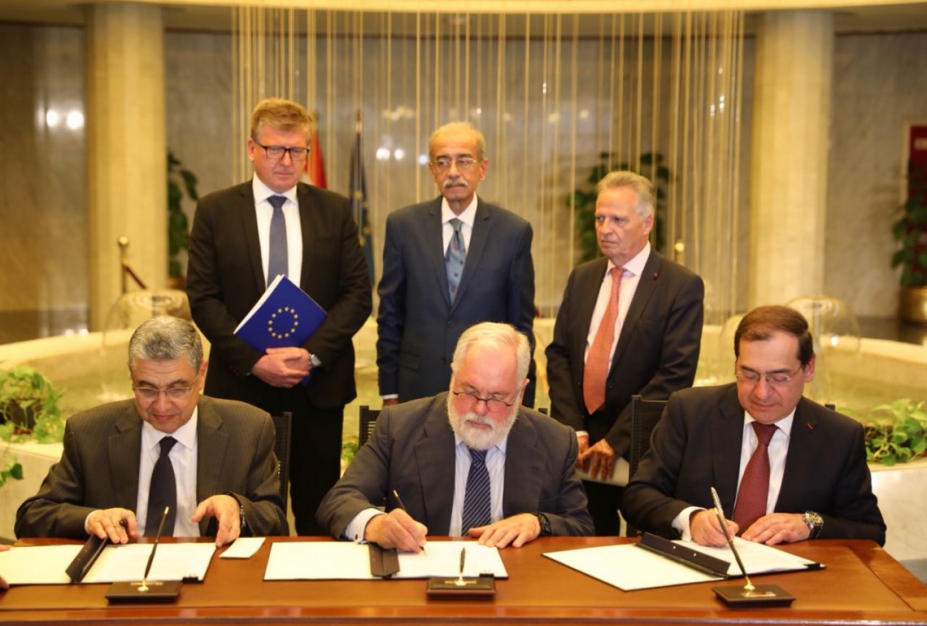EU, Egypt Sign Energy MOU
The European Union (EU) signed a memorandum of understanding (MoU) with Egypt during the first EU-Egypt Sustainable Energy Forum in Cairo, the European Commission (EC) announced April 23 (pictured below). The signatories were the EC's climate action and energy commissioner Miguel Arias Canete (centre), Egypt's minister of petroleum and mineral resources Tarek El-Molla (right), and its minister of electricity and renewable energy Mohamed Shaker (left).

(Credit: EC)
The agreement updates the energy sector co-operation between both sides and reflects the EU's priority of implementing a clean energy transition, the EC said. In order to help diversify Europe’s energy suppliers and routes, the EU is actively engaged in an energy dialogue at political level with north African and eastern Mediterranean partners, in particular with Egypt.
Egypt’s state news agency reported April 23 that EU provided Egypt a grant that is worth €68mn ($83mn), to finance the provision of a portion of the gas delivery fees to the homes of the neediest families, benefiting about 500 low-income families, in co-operation with the ministry of social solidarity. Tarek El-Molla said that the ministry has supplied gas to about 8.6mn homes since 1980, of which 30% was in the last four years alone.
He also added that the grant will also support the establishment of the enterprise resource planning (ERP) system in the Natural Gas Holding Company (Egas), in order to connect the entire sector together as a single entity to facilitate decision making. The EC did not mention the grant.
Egyptian gas demand and production are both set to grow, with some of the output from the giant Zohr field expected to be liquefied at the country's two facilities for export to Europe or beyond, depending on the market conditions at the time.



